by Ariane Zurcher | May 31, 2022 | Art, creative process, youtube |
My sister-in-law sent this to me this morning and I was so moved by it, particularly given all that is happening in our world, especially here in the United States, that I thought I’d share it with all of you.
I’ve mentioned before that my husband and I start our day reading from the The Daily Stoic. Often it’s a quote from Marcus Aurelius or Seneca or Epictetus, but it’s always thought provoking and interesting. We then discuss, each taking turns to share our thoughts and intentions for the coming day. It’s a really beautiful way to connect and begin the day.
The thing is I’m an early riser so I am often up several hours earlier than him and that’s when I practice my french, do a workout (yes, I’m still working out on my FitOn App, which I love and now do anywhere from 30 to 60 minutes of strength training, cardio and whatever else I can manage! I even have dumb bells that I use! Gasp! I know, I know, but at my age I really cannot let this slide…)
So when I went to answer emails this morning, while waiting for my husband to arise, I loved seeing this link to Peace Train. I teared up within the first few seconds, it is so beautiful. And I kept thinking about something we read the other day from The Daily Stoic about how it’s just as easy to be kind as it is to not be and takes just as little time. Added plus, kindness is a gift to everyone who receives it, regardless if they’re able to return it. The return isn’t the point. It’s the practice of it, the commitment to it, the act of doing it on a daily basis, that’s really the point. At least that’s the case for me.
Yesterday I did a livestream over on Patreon for my patrons, celebrating my 1st goal met, 100 Patrons! How amazing is that? I live-streamed from my summer studio. It was a lot of fun. During that livestream, I had the idea that I might start doing a prompt in my Facebook group: Ariane Zurcher Stitching Circle And then, as I was saying that, I thought it would be really fun to make an even more detailed prompt for all my Patrons over on Patreon. So I’m going to be thinking about that today and seeing what I come up with. But I already have some ideas that I think could be really fun.
There are 5 spots left in my upcoming Finding Your Voice Workshop. I did a short video explaining how that workshop came into being, a very short pictorial history of some of my other work when I was a fashion designer and jewelry designer and then came to stitching and how improvisational stitching was a major turning point and then going to the artist’s residency in France this spring was the next major turning point and what the workshop is all about. You can watch it, if you like, below.
And finally there are still spaces open in the Dorset Button Stitch Along and just 6 spaces left in The Basics Workshop, which I will NOT be teaching again for awhile, so if you’re new to all of this, please sign up now!
Have a peaceful day!
❤️

by Ariane Zurcher | Oct 26, 2021 | Art, Balance, creative process |
Yesterday I released a new Youtube Video with the same title.
Go check it out!
There are a few other key factors to interpretive hand stitching, improvisational hand stitching, expressionist hand stitching or whatever else you might want to call it. I think all of these are good descriptors of my process when taking a piece of linen and starting to stitch on it.
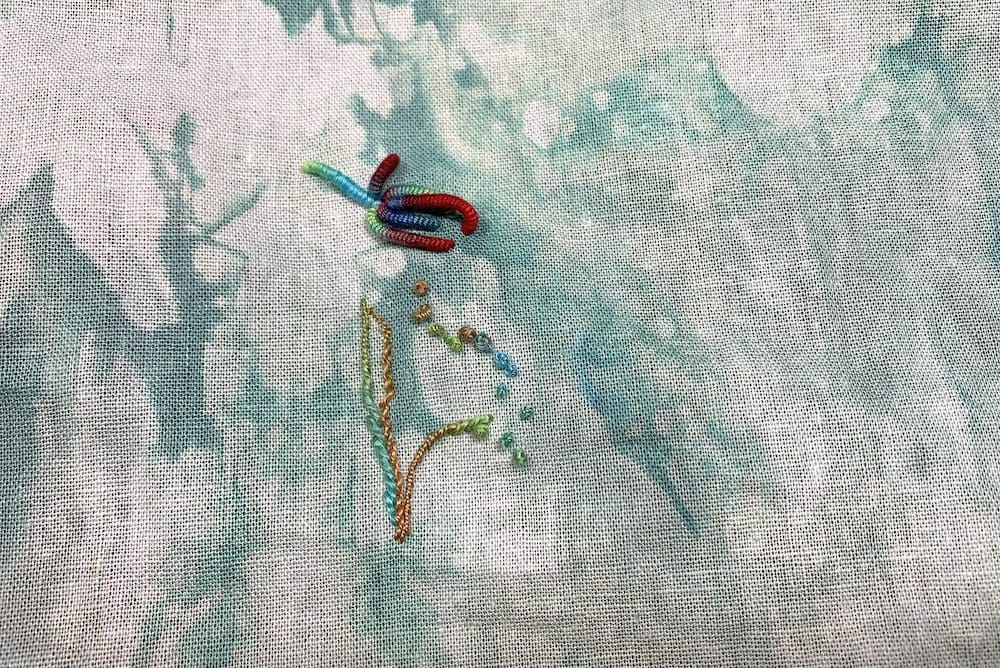
The first few stitches
However at a certain point, composition plays a key role in how the piece evolves. It’s not enough to just stitch and hope for the best. Without a good composition it can look like a bunch of disparate parts, each might be lovely taken on their own, but they aren’t necessarily interacting well with one another.

More stitching added…
Another common issue is that one part can take over, drowning out everything else; this brings its own set of challenges. Or perhaps the whole thing is stagnant. There’s not a great deal of movement, so it’s important to know when these things are happening and why. Without knowing why, it is nearly impossible to remedy.

Once the large X was removed the two half moons in the upper right and again in the lower left began to dominate
The trick then is to resolve the “divas” and figure out how to turn the volume down or remove them. In this case, I had to remove it. Between the shape and color it was too much. Except that when it was removed, I was faced with a new challenge.

Piece without the darker shapes
So that’s where I am right now. I’m sitting with the challenge of having removed three domineering shapes. Taken on their own, they were fine, but when seen as a whole they were dominating. Except now the piece isn’t grounded. It’s lost some of its vigor. Partly that’s due to the removal of the color, which lended a great deal to the overall piece. So now I have to figure out how to pull it together, give it some excitement. And this is how it goes. There’s a kind of ebb and flow that inevitably happens when working on a piece like this. Take away some aspect and suddenly there’s a new set of challenges.
The key is to not give in to discouragement. To keep going no matter what. To keep trying new things. Thinking out of the box, pushing the boundaries of what I know how to do, trying something I’ve not tried before, test out other colors or reintroduce a color I’ve removed and see how that shifts the conversation.
This is the process that is interpretive hand stitching. Where one idea leads to another and another and another and on it goes.

by Ariane Zurcher | Oct 21, 2021 | creative process, Design, hand stitching |
Yesterday I released a new YouTube Video: My Top Ten Favorite Threads For Hand Stitching.
As a follow up to that video, I’m adding my favorite materials to use, as well. Click on any highlighted text for more information.
Fabrics:
- Pat Pauly’s gorgeous hand dyed linens. My absolute favorite thing to stitch on is 100% linen and Pat Pauly’s gorgeous hand dyed linens are the best, most unique and above and beyond anything else that’s out there on the market. Pat is almost always sold out of her linens as the demand has been fierce, however, if you want to learn how to hand paint, stencil and screen print your own, take one of her workshops and you can learn to create your own. As a quick aside, I have a brand new workshop that I’m offering in 2022, which features fabric kits made up of Pat’s linens that she is specifically making exclusively for my workshop. These linens are only available to those who sign up for the workshop! Very exciting.

“Flow” using Pat Pauly’s hand dyed linens.
2. Mulberry Bark. I love layering my linen with Stef Francis’ Mulberry Bark. I stitch directly onto it. Some people have said they soak it in water, but I don’t. I prefer to pull it, bunch it up, stitch it down and let it be.

Adding Mulberry Bark
3. Hand Dyed Cheesecloth. There are places to purchase already hand dyed cheesecloth, Stef Francis being one of them, but I like to paint my own, using Caran D’Ache Neocolor II Water Soluble Pastels.

Hand dyed Cheesecloth and Silk Throwsters
4. Stef Francis Silk Throwsters. I love this stuff. It’s a bit like wool roving, but it’s silk and has a beautiful hand and texture to it. I needle punch it and then stitch on top of it.
5. Stef Francis Sari Ribbon It comes in a huge hank! I couch it, ruch it, scrunch it, twist it, use it to wrap other things in it and then stitch on it. There is no end to the things one can do with it.

Wrapping with Silk Sari Ribbon
6. Old T-shirt. I love hand dyeing an old t-shirt and then cutting it up. I did a video on how to do this. See below.
7. Silk Velvet It’s fun to hand dye your own, but Stef Francis also carries some beautiful silk velvet in gorgeous colors. If you want to get really creative, you can emboss your silk velvet, as I did in the photograph below. I like using wooden stamps, like these.

Embossed Silk Velvet
To see my Top Ten Favorite Threads to hand stitch with, go over to my video and be sure to scroll down to see the links I’ve provided for everything I discuss and demonstrate.
❤️
*Disclaimer: Ariane is a participant in the Amazon Services LLC Associates Program, an affiliate advertising program designed to provide a means for sites to earn advertising fees by advertising and linking to www.amazon.com at no additional cost to you.

by Ariane Zurcher | Oct 19, 2021 | Art, creative process, Life |
So here’s the thing… I feel a whole lot better when I show up even when I feel awful, even when I feel things are rough and I’m tired, even when I don’t want to. I’ve also learned that showing up anyway is the single best remedy for not continuing to feel that way. Except that it’s also really hard to do. That’s the thing. It’s really, really hard and sometimes… sometimes it feels impossible. I know it technically isn’t, but it sure feels that way.
Marcus Aurelius wrote about pain a great deal. And in his writings about it he consistently focusses on choice and responding, rather than reacting. I’m a huge fan of Marcus Aurelius, not just because he was wise, but because this guy was one of the most powerful men in the world and yet he continued to do his best to remain humble, to avoid arrogance, to nurture self awareness and to treat others with respect and kindness.
So yeah, showing up anyway. Easier said than done, so I have found ways to do so that aren’t quite so laden, that make it a tiny bit easier. I call it setting myself up to succeed.
Here’s what I do:
- Thread up a whole bunch of needles with different types and weights of thread. I use both Chenille needles and Milliners Needles.
- Grab a needle, any needle, it doesn’t matter which one, and begin stitching. I have a couple of mindless go-to stitches that don’t require any thought. They are the meditative stitches like french knots, bullion knots, colonial knots, seed stitch, chain stitch, fly stitch, straight stitch and then I riff on them, which means I start exploring every aspect of that stitch. How many wraps can I make on a french knot before the whole thing begins to fall apart? (It turns out a lot more than you might think!). What ways can I stitch a straight stitch to create different patterns?
- Exploration
- Investigation
- And before you know it, I’m playing!
Stitching, more than anything, changes everything, even grief, even pain.

If you’re curious to know how I did this, I made a video about it and you can watch it here:
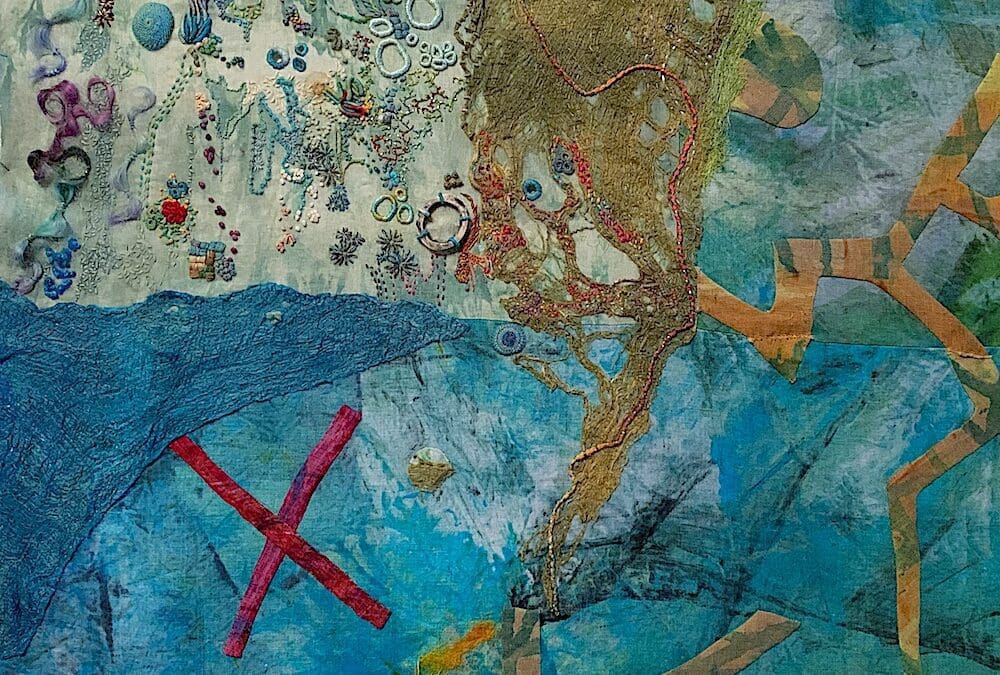

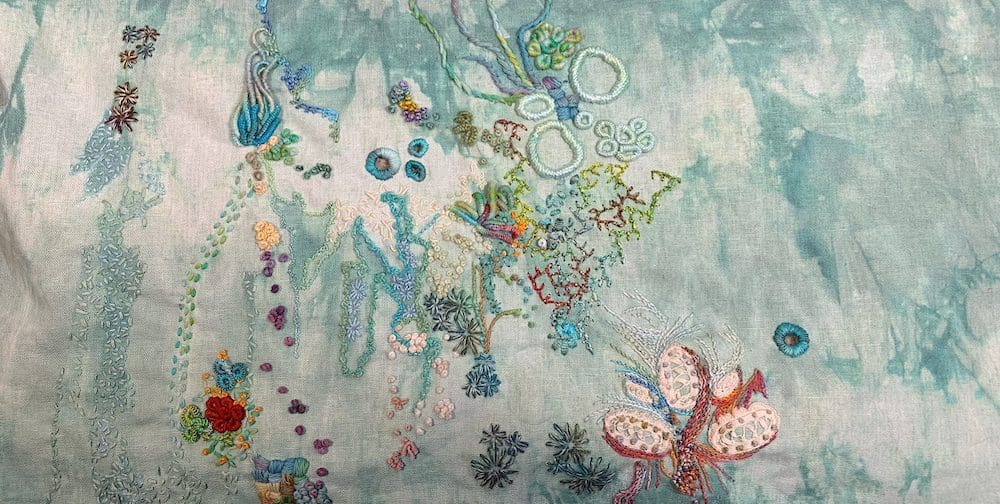
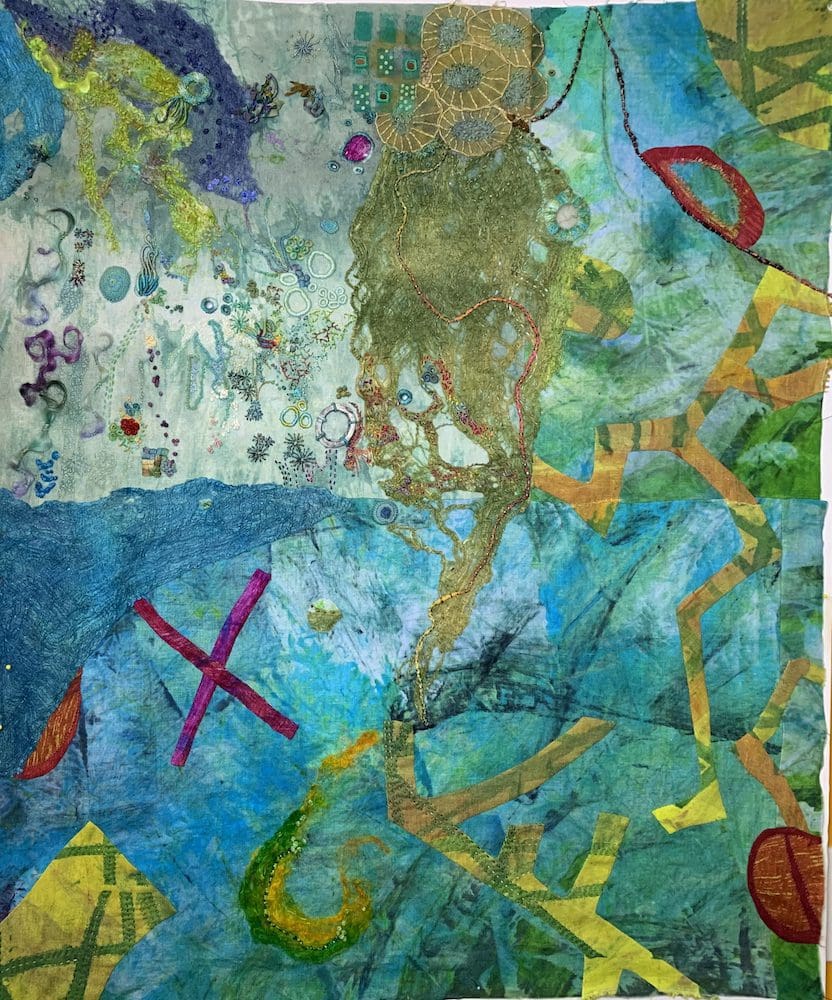



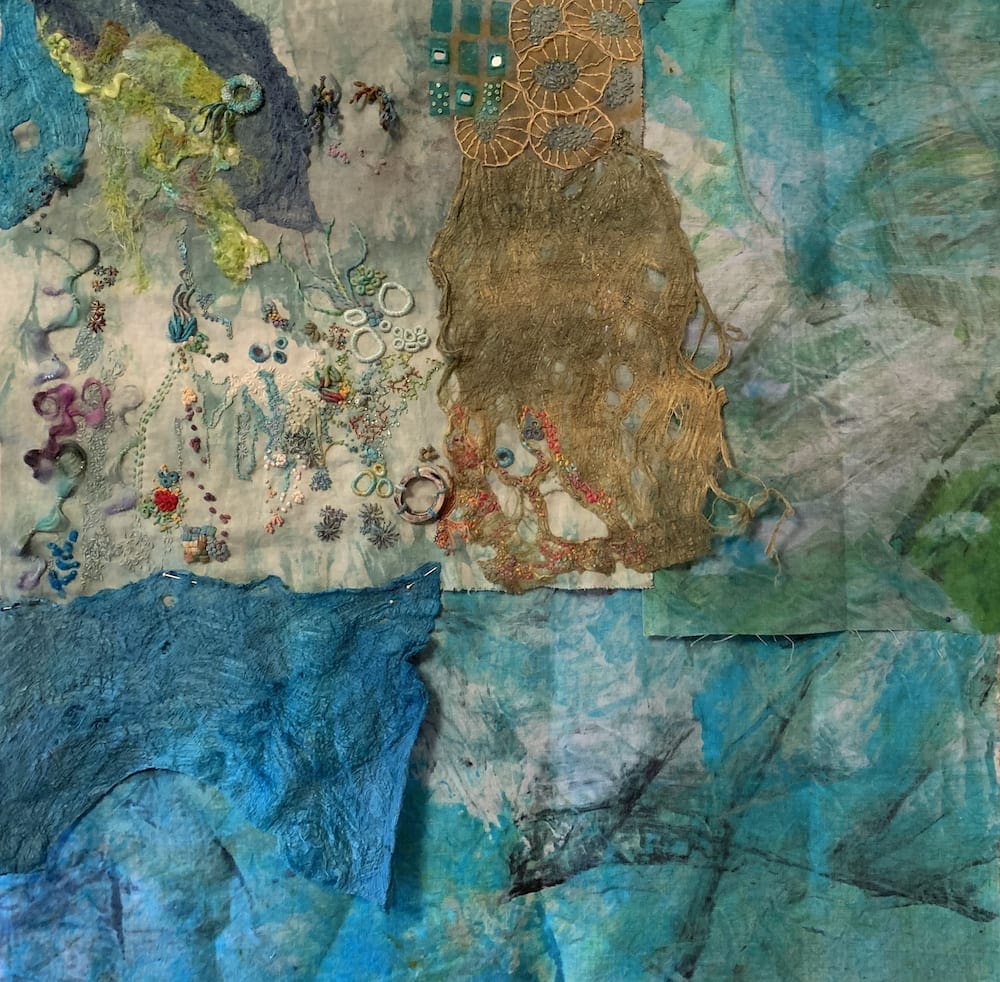


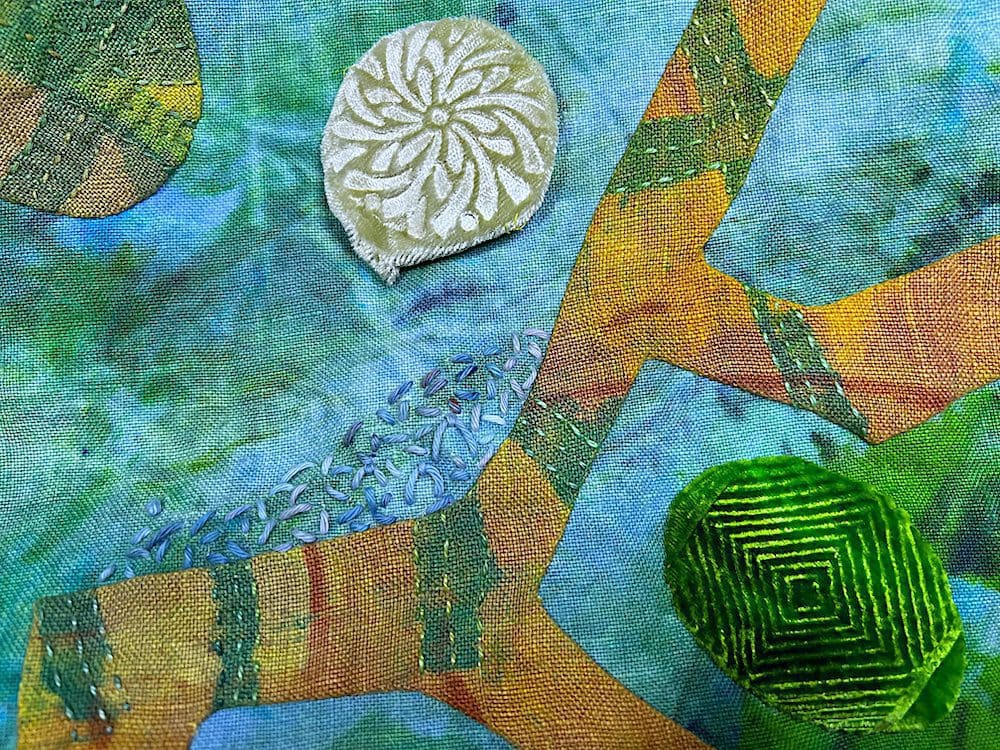
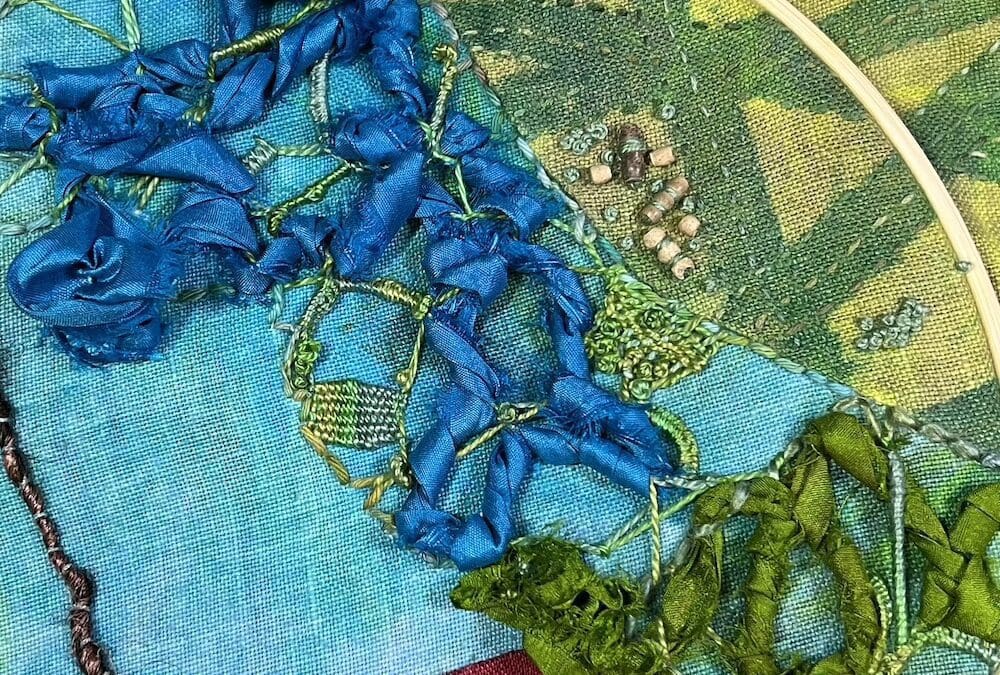
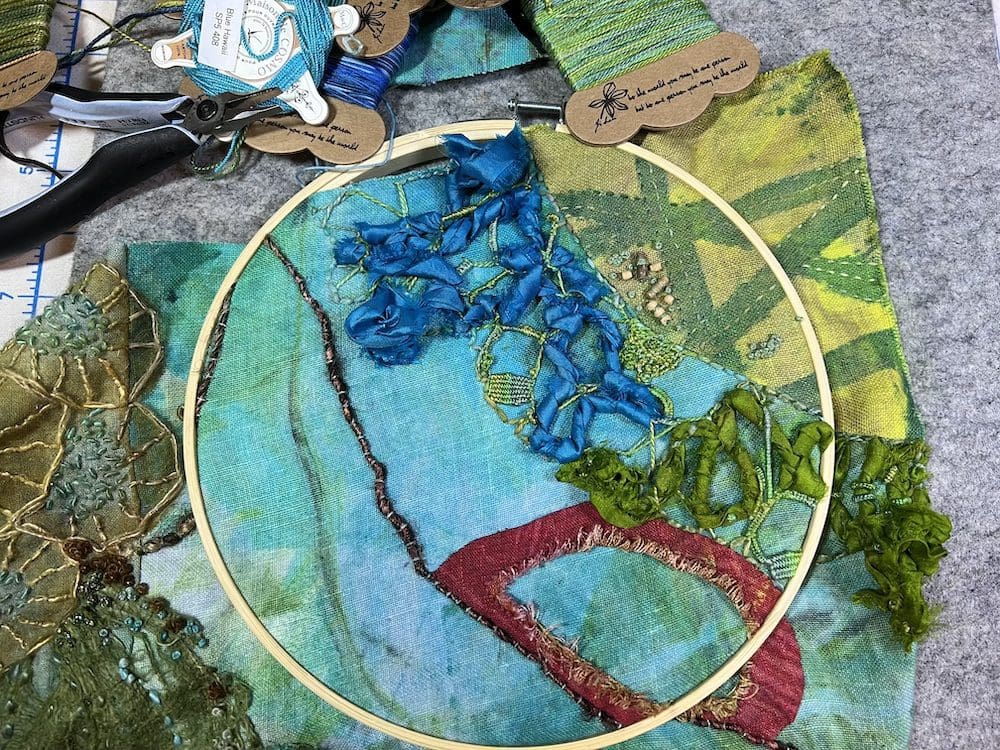
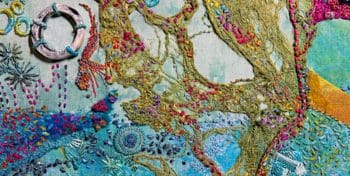



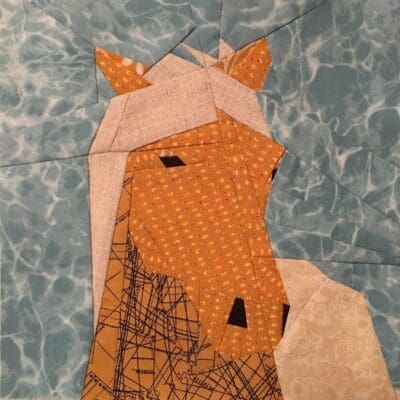
Recent comments